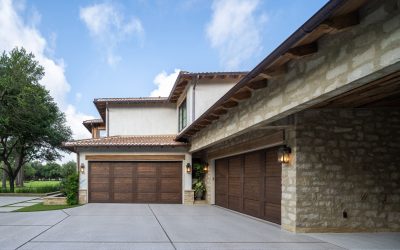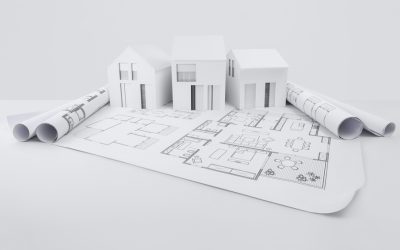Embarking on the journey to build a beautiful custom home while managing an existing mortgage can seem overwhelming. Balancing two financial commitments requires careful planning, diligent budgeting, and expert advice. However, with the right strategy, you can make this exciting transition smoothly and confidently.
In this guide, we’ll walk you through everything you need to know about securing a new home construction loan in 2025 while holding an existing mortgage. From understanding the basics of construction loans to managing your finances during the build, this article covers it all –
What is a Home Construction Loan?
A home construction loan is a short-term, specialized loan designed to finance the cost of building a new home from the ground up. Unlike a traditional mortgage that disburses the entire loan amount upfront, construction loans release funds in phases, known as “draws.” These disbursements occur at various milestones during the construction process, such as after the foundation is laid or the framing is complete.
Key Features of Home Construction Loans:
- Short-term duration (usually 12-18 months)
- Interest-only payments during the construction phase
- Draw schedule based on project completion stages
- Conversion to a traditional mortgage upon project completion (if structured as a construction-to-permanent loan)
Can You Get a New Home Construction Loan with an Existing Mortgage?
Yes, managing a construction loan while maintaining payments on an existing mortgage is possible. However, doing so requires a robust financial plan. Lenders will evaluate your ability to cover both obligations simultaneously, considering factors like income, debt-to-income ratio, and available savings.
How to Get a New Home Construction Loan While Managing a Mortgage
1. Assess Your Financial Situation
Before applying for a new home construction loan, evaluate your current financial standing:
- Mortgage payments: Calculate your existing monthly mortgage costs.
- Debt-to-income ratio: Lenders typically prefer a ratio below 43%.
- Credit score: Higher scores often result in better loan terms.
- Savings: Set aside funds for emergencies or unexpected construction costs.
2. Find the Right Lender
Not all lenders offer construction loans. Research banks, credit unions, and specialized lenders with experience in home construction financing. Ask about:
- Loan terms and interest rates
- Draw schedule requirements
- Fees and penalties for delays
3. Prepare Detailed Documentation
To secure a construction loan, you’ll need:
- A complete set of architectural plans
- A builder’s contract detailing costs and timelines
- Proof of your financial stability (income statements, assets, credit history)
4. Get Pre-Approval
Pre-approval helps you understand how much financing you can secure and allows you to plan your budget accordingly. It also strengthens your position when negotiating terms with builders.
How to Manage a New Home Construction Loan While Paying an Existing Mortgage
Create a comprehensive budget that includes all costs associated with the new build, such as:
- Construction expenses
- Permits and inspection fees
- Interior design and furnishing costs
- Temporary housing (if needed)
- A contingency fund (typically 10-15% of the total budget)
– Stay in Constant Communication with Lenders: Keep both your mortgage and construction loan lenders informed about your financial situation and construction progress. Regular updates can help prevent misunderstandings and delays.
– Understand Draw Schedules: Work closely with your home builder and lender to meet construction milestones. Lenders will inspect the progress before releasing each draw, so staying on schedule is essential for timely disbursements.
– Plan for Dual Payments: During construction, you’ll likely make interest-only payments on the construction loan while continuing your full mortgage payments. Make sure your budget accounts for both expenses to avoid financial strain.
– Build a Financial Cushion: Unexpected expenses are common during construction. Set aside a financial buffer to cover unforeseen delays, material shortages, or additional labor costs.
– Consider Temporary Housing: Depending on the scope of your build, you might need to arrange for short-term housing. Factor this cost into your overall budget.
Transitioning to Your New Home
Final Inspections and Loan Conversion:
Before moving in, ensure all inspections are completed, and your lender approves the final draw. If you’ve opted for a construction-to-permanent loan, the lender will convert your short-term financing into a traditional mortgage.
Selling Your Existing Home:
If your plan involves selling your current home, consider:
- The timing of the sale
- Market conditions
- Potential proceeds to cover remaining mortgage balances or contribute to your new mortgage
Plan Your Move Strategically:
Organize moving logistics well in advance to avoid last-minute stress. Coordinate utility transfers, address changes, and service setups to ensure a seamless transition.
Expert Tips for Managing a Construction Loan and Existing Mortgage
- Work with a Financial Advisor: An expert can help optimize your financial strategy and minimize risk.
- Choose an Experienced Builder: A reliable contractor can prevent costly delays and mistakes.
- Monitor Construction Progress: Regular site visits can help ensure the project stays on track.
- Be Realistic About Timelines: Construction often takes longer than expected. Build flexibility into your schedule.
Get Your New Home Construction Loan with Confidence
Managing a construction loan while holding an existing mortgage is challenging but achievable with proper planning and professional guidance. By understanding loan requirements, creating a detailed budget, and maintaining open communication with your lenders, you can confidently navigate the process.
Ready to bring your new home to life? Contact Picklo Homes today at 281-252-4447 and let our experts help you create a custom home that perfectly suits your lifestyle and needs.



